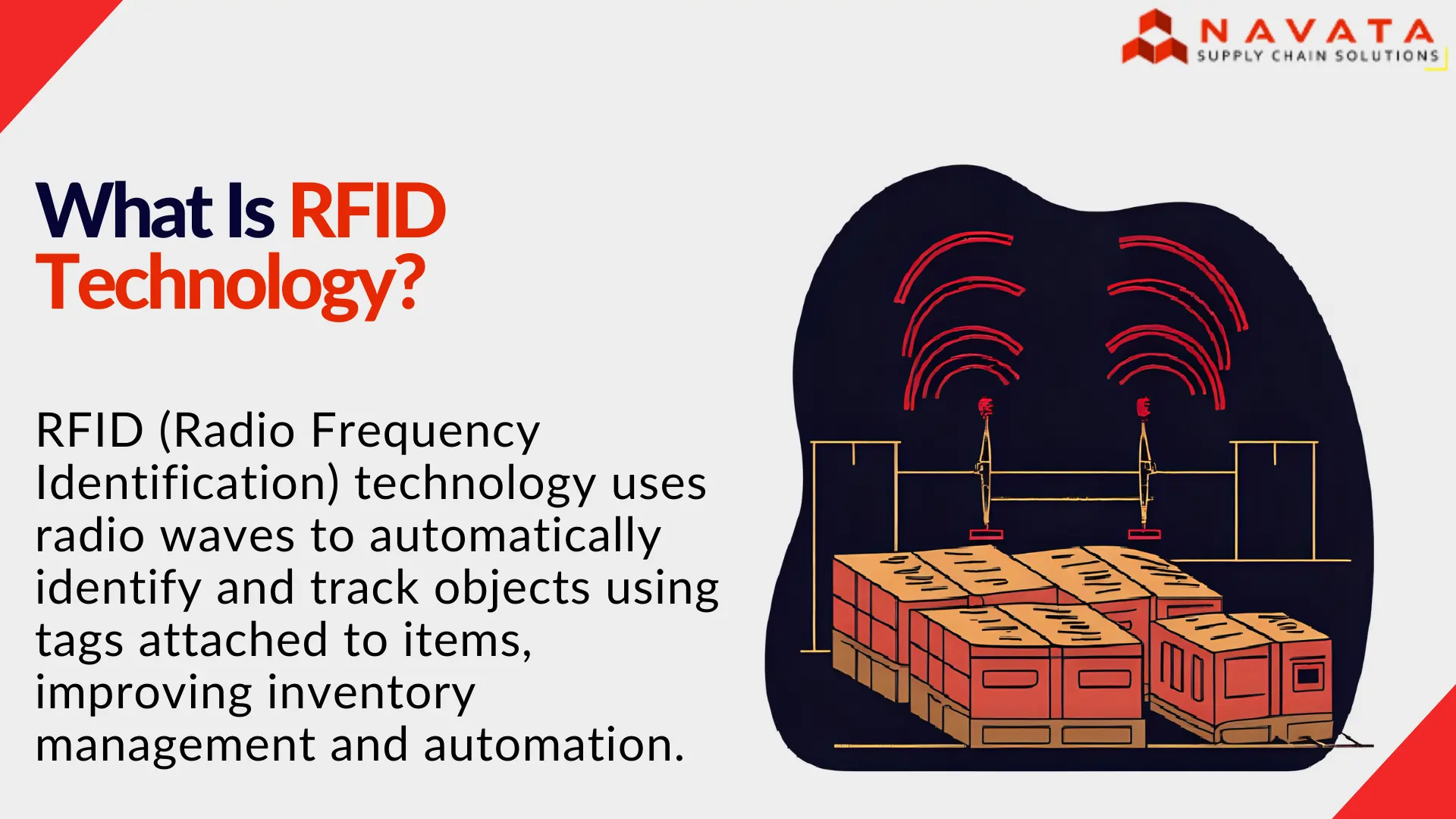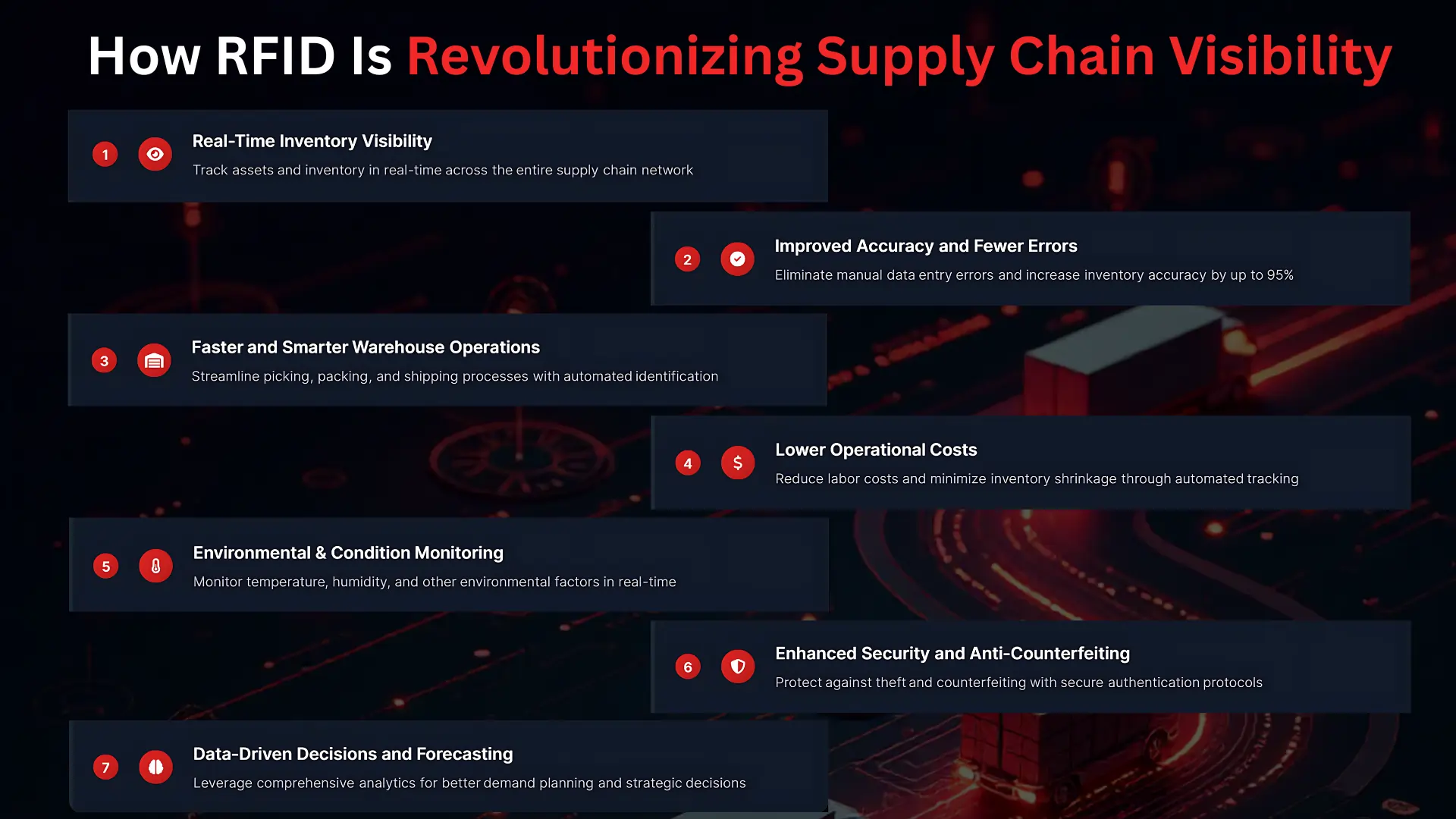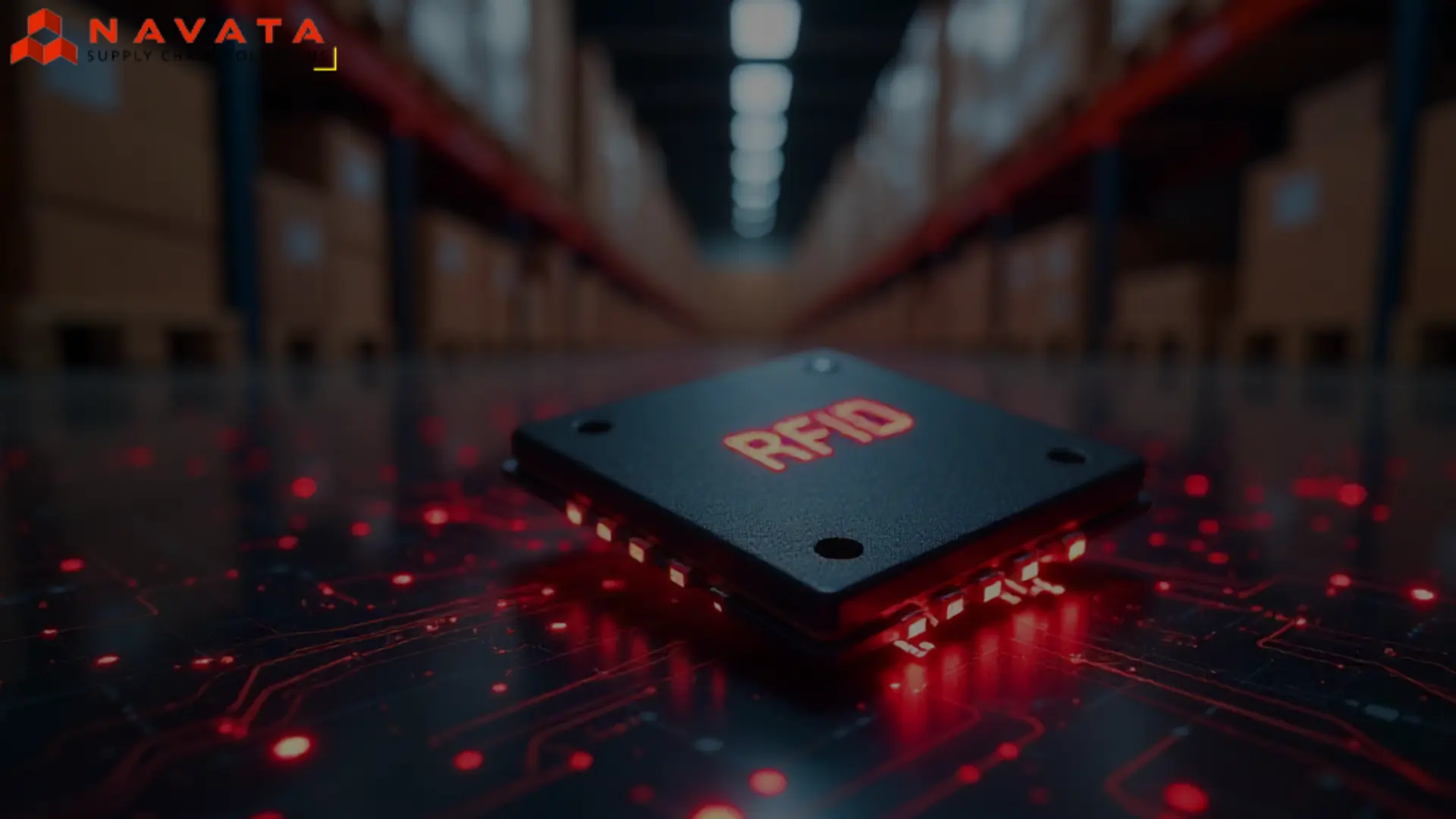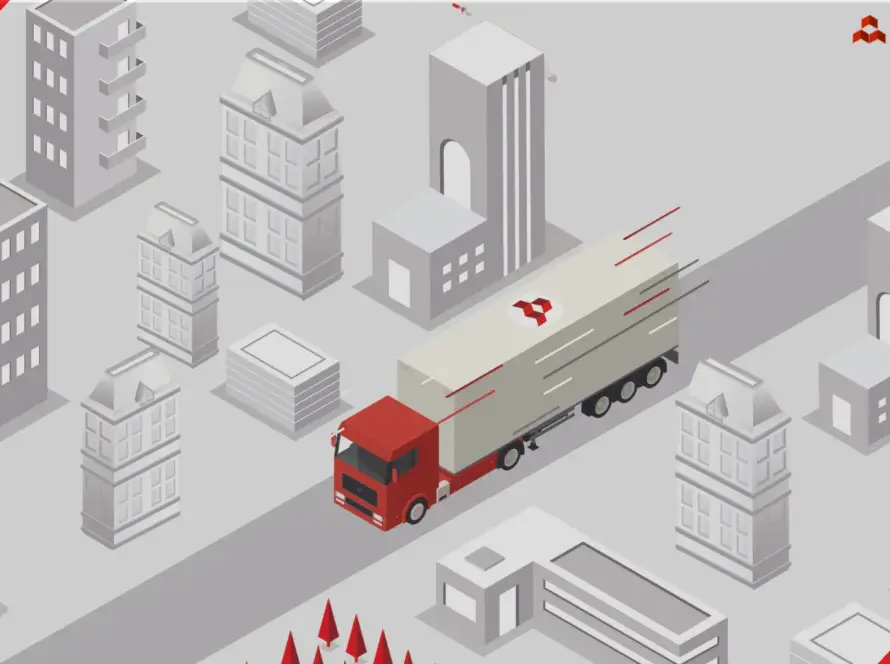What Is RFID Technology?
RFID stands for Radio Frequency Identification. It’s a wireless system that uses radio waves to identify and track objects without the need for direct line-of-sight scanning.
At its core, an RFID system consists of:
- RFID tags – Tiny chips with antennas that store data.
- RFID readers/scanners – Devices that detect and capture data from the tags.
- A backend system or software – Where all the data is processed and analyzed.
RFID tags can be attached to products, boxes, pallets, or even vehicles—allowing businesses to track assets in real-time as they move through the supply chain.

You May Also Like to Read: Data and Analytics in Supply Chain Management
How Does RFID Work?
Here’s a simple breakdown:
- The RFID tag emits data when triggered by a signal from the reader.
- The reader picks up the signal and transfers the tag’s information (like product ID, location, or temperature) to a central database.
- The system updates inventory or asset movement in real-time.
Unlike barcodes, RFID doesn’t need to be manually scanned. It can read hundreds of items at once—even when they’re hidden or moving quickly.
How RFID Is Revolutionizing Supply Chain Visibility
Now that we understand what RFID is, let’s explore why it’s such a game-changer for supply chains worldwide.
1. Real-Time Inventory Visibility
RFID enables companies to monitor inventory as it moves—from production and warehousing to transit and final delivery. This means:
- No more lost goods or inventory blind spots
- Up-to-the-minute stock counts
- Faster restocking and order fulfillment
2. Improved Accuracy and Fewer Errors
Manual scanning is prone to mistakes. RFID automates the tracking process, significantly reducing:
- Human errors in inventory counts
- Mismatches in shipments
- Manual data entry delays
This boosts inventory accuracy to over 99%, leading to better order accuracy and customer satisfaction.
3. Faster and Smarter Warehouse Operations
RFID speeds up daily tasks like:
- Receiving goods
- Picking and packing orders
- Verifying shipments
With handheld or fixed readers, staff can scan entire pallets in seconds—dramatically improving productivity and throughput.
4. Lower Operational Costs
While there’s an upfront investment, RFID quickly pays off by:
- Reducing labor costs
- Minimizing product loss or theft
- Preventing stockouts and overstocking
It also allows better use of storage space, leading to more organized warehouses and lower warehousing costs.
5. Environmental & Condition Monitoring
RFID can track more than just location. Sensor-enabled tags can monitor:
- Temperature
- Humidity
- Shock or tampering
This is vital for industries like pharmaceuticals, food, and electronics, where product quality during transit matters.
6. Enhanced Security and Anti-Counterfeiting
Each RFID tag carries a unique digital identity, which:
- Helps verify product authenticity
- Prevents the circulation of fake or unauthorized goods
- Enables product recall traceability with pinpoint accuracy
7. Data-Driven Decisions and Forecasting
The real power of RFID lies in the data. Businesses gain insights into:
- Inventory turnover
- Warehouse performance
- Demand forecasting
- Supplier performance
These analytics help optimize operations and respond faster to market changes.

You May Also Like to Read: What is Warehouse Management System (WMS)?
The Future of RFID in Supply Chain
RFID isn’t a distant innovation—it’s here, and its potential is only growing. Here’s how the technology is set to transform the future of logistics:
Integration with AI & IoT: When paired with smart sensors and AI-driven platforms, RFID data becomes a powerhouse. It can trigger automated workflows, predict equipment failures, and optimize delivery routes without human intervention.
Smaller & Cheaper Tags: Technological advancements are lowering the cost and size of RFID tags. This makes them accessible even for small businesses, opening the door to broader adoption across various sectors.
Blockchain Integration: By combining RFID with blockchain, businesses can ensure every product has a secure, tamper-proof record. This is vital for industries like food, pharma, and luxury goods where traceability builds trust.
Sustainability Tracking: RFID enables smarter packaging, route planning, and waste reduction by offering granular data on product movement. As green logistics becomes a priority, RFID will play a key role in tracking and achieving sustainability targets.
In short, RFID is set to become the digital backbone of intelligent, sustainable, and fully connected supply chains.
Should You Adopt RFID?
If your business struggles with:
- Lost or misplaced inventory
- Inefficient warehouse operations
- High error rates in orders or shipments
- Lack of real-time supply chain visibility
Then RFID can be the transformative solution you need.

You May Also Like to Read: What is IoT and how it is Shaping Supply Chain & Logistics
Conclusion
RFID technology is no longer optional—it’s essential for modern supply chains. With real-time visibility, fewer errors, and faster inventory control, RFID drives smarter decisions and sharper execution. It boosts accuracy across warehouses and last-mile delivery alike. In today’s digital race, RFID isn’t just an upgrade—it’s a strategic move.
Now is the moment to adopt RFID. Whether you’re scaling logistics, optimizing inventory, or demanding full traceability, RFID equips your business to perform with speed and precision.
Thanks For Reading: What is RFID Technology & How It Is Revolutionizing Supply Chain Visibility
Powered By 360Presence

